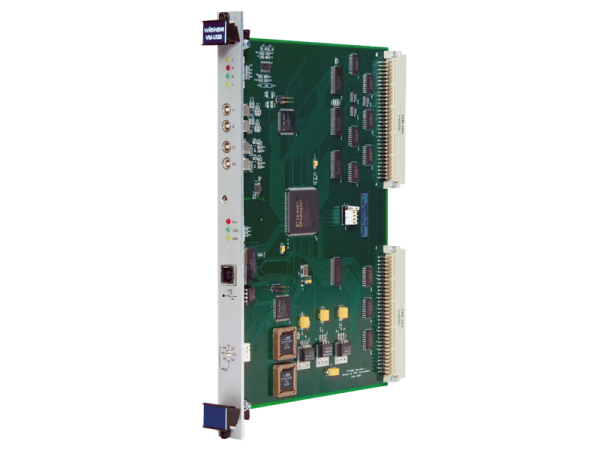VME is a high speed and high performance bus system with powerful interrupt management and multiprocessor capability. It was created by combining VERSA-bus electrical specifications (1979) with the Euro-card format resulting in the VME-bus Revision A - 1981 specification.
The VME-bus specification has since then been refined through revisions B (1982), C, C.1, IEC 821 & IEC 297 and IEEE 1014-1987 as well upgraded to VME64x and VXS in later years. VME still represents one of today's most used industry bus standards.
VERSA-bus and consequently VME bus was originally based on the MOTOROLA MC 680x0 architecture, i.e. it is a master-slave computer architecture with 32 bit wide Address and Data buses and is using an asynchronous transfer principle. The VME64 extension doubles the transfer rate by simultaneously using both the 32 address and the 32 data lines multiplexed for 64 bit wide for data transfers (D64). Data transfer rates are up to 40 and 80 Mbyte/sec for D32 and D64, respectively. Using dual edge, synchronous strobe protocols up to 320MB/s are possible per VME64x specification. VXS further adds high speed serial links to the bus architecture.
The mechanical design is based on the Euro-card form factor. Standard VME modules are 6U high and 160 mm deep. For physics instrumentation a 9U x 400 m form factor was added. All VME modules are equipped with two 3-row DIN-96 pin (VME64x: 5-row DIN-160 pin) type connectors P1/P2 which match the backplane connectors J1/J2.
Documents
-
AVM16 - 16 Channel VME 12 Bit X 160 MHz ADC
Download (214.04 kB) -
MDGG - 8 Multi Functional VME Logic Module
Download (210.89 kB) -
MDGG - 16 Multi Functional VME Logic Module
Download (214.25 kB) -
VM-DBA VME Display And Bus Analyzer Module
Download (195.32 kB) -
VM-USB VME Controller With USB-2 Interface
Download (220.66 kB) -
VME Load Card
Download (173.55 kB)

